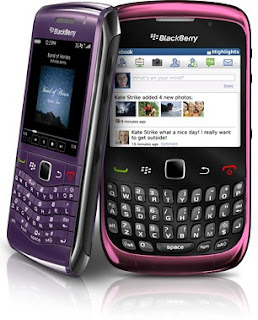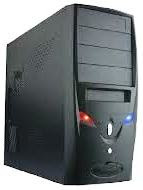September 14,2012
Computer hardware is the framework or the platform on which the computer software is built. It is that tangible part of the computer that we can see for example the hard disk and floppy disk. Just as the human body have different parts with different functions but all combine to form a whole. The same with the computer system. The computer hardware system has input and output devices, storage unit, Memory, Central processing unit, Control Unit, Arithmetic Logic unit, Power Supply Unit, the Motherboard and the Peripherals. It is when all these different parts function properly that the computer system is optimised.
The Computer Motherboard
This could also be referred to as the circuit board or the main board. As the name implies the computer motherboard serves as the connecting points for virtually every other components of the computer. Any discourse on this subject matter without mentioning the motherboard is not complete. It houses the Memory (the brain) of the computer, the Ram, Rom, C MOS battery, BIOS etc. It has expansion slots such as the PCI, AGP, ISA, PCI-e, PCI-x etc. This provides for more attachments if the need be for additional functions. All the interconnectivity is done on the motherboard attached to the case of the computer.
The motherboard specification have to be compatible with the kind of CPU it uses. There are different manufactures of CPU such as Intel, IBM, AMD and Motorola etc. the same has to do with other parts such as the power supply pack. This is one primary factor to consider when purchasing spare parts .The issue of compatibility most always be considered.
The Computer Housing (casing)
This is a vital part of the computer hardware though it is not most of the time mentioned. The Motherboard is attached to the casing (screwed to it) and components like the Floppy drive have their slots.
The Central Processing Unit (CPU)
The central processing unit of computer hardware is analogous to the human brain. It houses the control unit, the arithmetic logic unit, and the cache memory (storage unit). The entire system is controlled from this point. All the instruction the computer receives are interpreted and given to other units for execution from this point. The control unit extracts instruction from the main memory and interpret it for execution .It maintains a control path for every unit connected to the computer. The CPU because of its size is also referred to as the Microprocessor and interchangeably called the Processor.
A very essential part of the CPU is the Arithmetic Logic Unit (ALU), it performs the computational and the logical operations of the computer system such as multiplication, addition, subtraction, division and logical comparison of data extracted from the memory (storage) unit. It has the ability to set appropriate indicators for each of the data so extracted. The ALU has it reserve area called registers where these functions are performed at a very fast speed.
The storage unit (cache memory) which can also be referred to as the registers is a temporary storage unit before data are processed. This is a high speed cache memory because of its limited space it has auxiliary units where data not yet ready to be processed are stored. Such data are usually reloaded when needed for processing. By implication, there is a continuous communication between the Storage Unit, Control Unit and Arithmetic and Logic Unit which in turn controls other components of the PC. The speed of the Processor will determine the speed of the entire computer system. It is usually measured in hertz via the clock unit in the CPU. A very high clock speed means a high CPU speed.
The RAM
The RAM (Random Access Memory) of a computer is a storage unit that work directly with the Microprocessor. Anytime a program is launched, the Random access memory extracts information or data from the Hard drive for execution. Any data extraction stored in the Hard drive met for use at anytime on the computer system is carried out in the RAM. The Random Access Memory is very fragile and temporary storage unit; at any slight power outage all information or data in it would be lost. However it usage is necessitated on its speed which the Hard drive cannot cope with relative to the speed of the processor. There are basically two types of Random Access Memory, the Dynamic RAM and the Static RAM. The SRAM is faster but DRAM is commonly used because the former is very expensive. However both of them are very fragile. The RAM is also called the main memory alongside with the ROM.
The ROM
The ROM is an acronym for Read only memory. The ROM usually contains the manufacturer information termed ‘’read only’’ which cannot be changed. The ROM boot up the computer anytime it is switched on. The content of ROM remains unlike the RAM when there is a power outage.
The Hard Drive
The computer hard drive is also known as the Hard Disk is that part of Computer Hardware that is used to store large volume of data. Modern hard disk has the capacity of storing over five hundred Gig of data. Unlike the temporary storage system of the computer memory the hard disk does not lose its data as a result of a power outage or when the system is switched off. Data can always be retrieved anytime when needed. The hard disk is attached to the motherboard of the system and it is not usually removed.
Removable Data Storage Devices:
1. The Floppy and Compact Disc Drive: These are computer hardware devices with storage facilities that can be removed from the computer. That is the floppy disk and the compact disk can be replaced or changed for ones with higher capacity. However their storage capacity is low as compared with the hard disk.
2. USB Flash Drive: This is also a removable storage device which can store millions of bites. Some can also serve as MP3 player. The system has a number of slots where it can be connected.
3. Memory Card: This is a very common removable data storage facility which can be connected via a data card reader to the computer. In recent times there are memory cards with over ten Gig storage capacities. It is however advisable to use ones with average storage capacity as most makes are subject to breakage and virus infection. This could lead to loss of valuable data if not back up.
The Power Supply Unit
This is a very important unit in the computer hardware system; it is also referred to as the power pack of the system. The power pack is detachable, it is the first point of call in terms of power flow and its type and capacitance will go a long way to determine how well a computer units function with respect to power requirement. The compatibility of the power unit with the motherboard is of utmost importance when considering replacement or spare parts. An expert advice should be sorted for when considering the kind of power back up to employ.
Monitor
The monitor is an output unit of the computer hardware responsible for display of the computer operations. The monitor has a close similarity with the TV. It has a screen which in order to function is connected to the computer motherboard with a data cable. Monitors come in different sizes and resolutions. Most commonly used in recent times are the ones with flat screen and with very high resolutions. The computer display adapter determines to a large extent the number of colours the display supports and how fast the monitor refreshes when in use.
The Keyboard
The input unit responsible for inputting data or information into the computer system with letters, numbers, symbols, signs and buttons is known as the keyboard. The keyboard enables the user to interact with the computer system. A standard keyboard has the Functional keys such as F1, F2…..F12, the alphanumeric section and the numeric cursor keypad.
The Mouse
The mouse is an input facility of the computer hardware externally connected to the computer. It makes navigation with respect to computer usage flexible and easy. The Mouse has two major buttons one on the left and the other on the right. The button on the left is called the primary mouse button. While the one on the right is called the secondary mouse button. When the mouse pointer is navigated to the desired point on the monitor and clicked, the required program, data or file will open. The mouse is usually placed on the mouse pad especially for uneven surfaces. For optimum performance the mouse buttons should always point towards the monitor.
The Speakers
The speaker is an output device in the computer hardware. It main function is to generate sound from the computer. The quality of sound related recording or activity on the PC whether audio or video is felt most when quality speakers are available and connected.
If you found this information useful bookmark this Site and share it with others. Also feel free to make your comment or contribution.
 />
/> />
/> />
/> />
/> />
/> />
/> />
/> />
/> />
/> />
/> />
/> />
/> />
/> />
/> />
/>